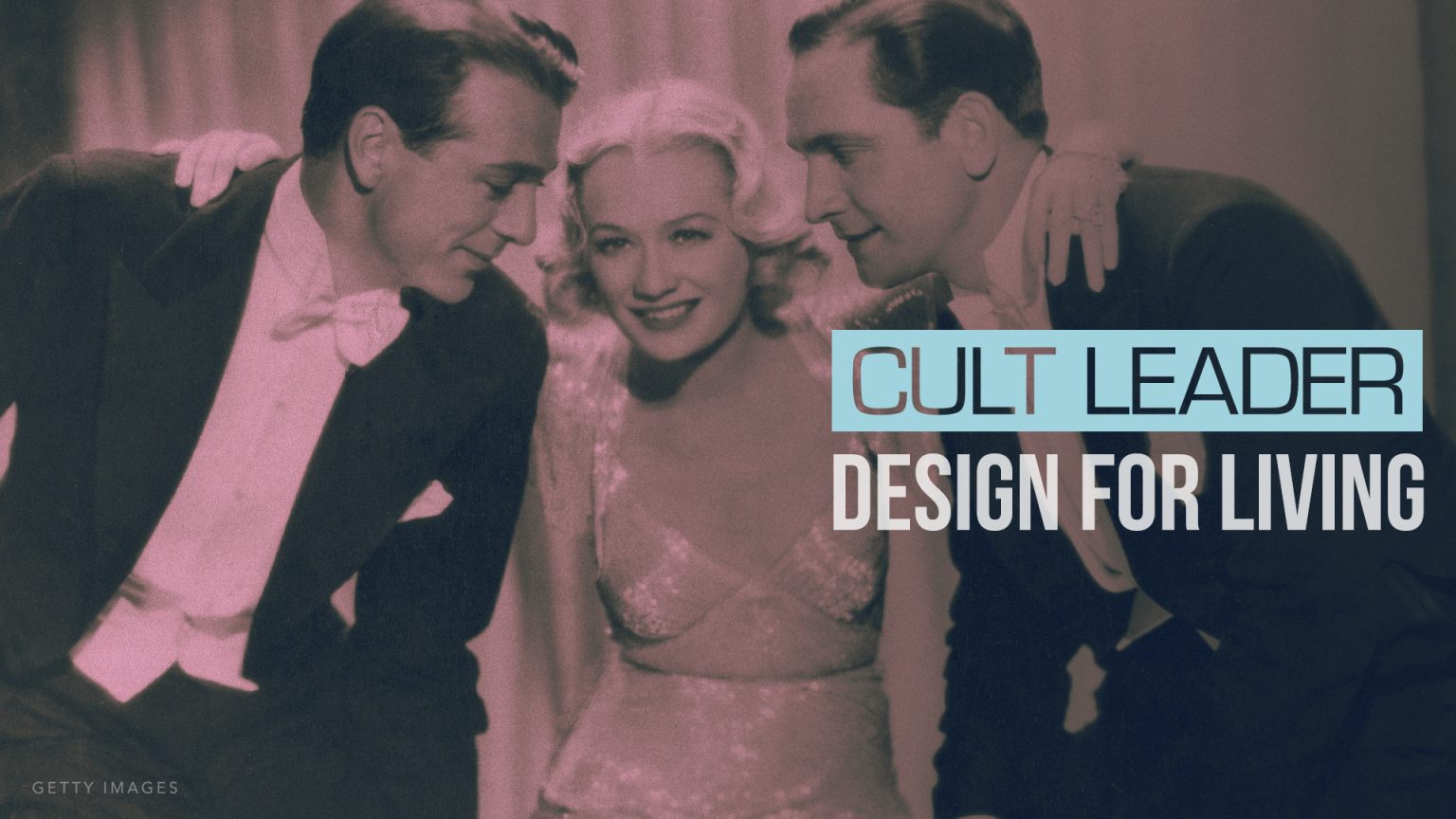In 1933, just one year before the enforcement of the Hays Code (designed to hold Hollywood films to a “wholesome” standard, especially in regards to sex), writer/director Ernst Lubitsch released the film Design for Living, a bouncy anti-capitalist rom-com celebrating polyamory. Lubitsch is too often a mere cinematic footnote — known to many movie fans as the creator behind Ninotchka and The Shop Around the Corner, but not much else. He developed his signature wit and dexterity in his silent film work in Germany before bringing it to Hollywood, where he effectively created the Romantic Comedy genre. These kinds of sophisticated European sensibilities all but disappeared from the American cinematic landscape after the end of the Second World War (coinciding with Lubitsch’s death). American Puritanism returned and Lubitsch’s influence faded.
Design for Living is a complete rewrite (by regular Lubitsch collaborator Ben Hecht) of a controversial, but very successful, Noël Coward play from the previous year. On a train to Paris, a commercial artist named Gilda (Miriam Hopkins) has what is undoubtedly cinema’s first three-way “meet cute” with an up-and-coming painter, George (Gary Cooper), and a promising playwright, Tom (Frederic March). After dating both men for a bit, Gilda muses to them that she finds it quite unfair that men get to sow their wild oats before they put a ring on it, while women are not allowed any dalliances and must choose a mate without fielding other offers first. Gilda proposes a “gentlemen’s agreement” whereby she continues seeing both men platonically while focusing all of her energy on furthering their artistic careers. Tom and George eventually achieve massive success with her help, but by then the “gentlemen’s agreement” has been broken a few times and Gilda comes to understand she cannot have the non-traditional life she wants with both men and she cannot choose between them. She hastily weds her conservative friend Max (played by character actor Edward Everett Horton), and Tom and George realize they must band together to get Gilda back for the sake of both love and art. They crash Gilda’s first society party—to her delight—and she convinces Max he’s better off without her. The three leads enthusiastically decide to shirk these new bourgeois trappings, return to their former bohemian lifestyles in Paris, and of course, reinstate their “gentlemen’s agreement.”
Early romantic comedies usually required the two leads to be married (or even recently divorced) so that sex could be hinted at within the safe confines of societal norms. Even films that insinuated extramarital affairs or polygamy, such as the 1940s Too Many Husbands (and My Favorite Wife, released the very same year—and with an identical plot) played up the rigid absurdity of such rules but eventually navigated the audience back to steady “moral” ground in the end. Marriage was a safety net to appease the censors. Lubitsch and Hecht managed to outwit the censors by creating off-screen space. Design for Living is a comedy of omission. Characters’ actions run contrary to most of what they say, and on top of that, these actions are conducted behind closed doors or in between scenes. Even though the characters constantly reassure the audience about their “gentlemen’s agreement,” they break the pact at every turn, mostly off-camera. In the end, Lubitsch does not make Gilda choose, nor does he punish her (a rarity for brazen female characterizations at the time). She isn’t just dating two men, or even having an affair, she is seeking out a long-term non-monogamous lifestyle with Tom and George. Gilda may be giving up her personal career goals to prop up these two men, but conversely, she is placing herself in charge of the career of two artists who admit that their efforts are fruitless without her. Gilda is not a muse; she is a business manager. And on top of it all, she ends up with the men of her dreams.
Lubitsch’s comic stylings can be found in the works of contemporaries like Billy Wilder and Howard Hawks, and are echoed by a subsequent generation of cinema greats, such as Peter Bogdanovich and Bill Forsyth. However, few working directors have the “Lubitsch Touch” – an economy of motion combined with confidence in the viewers’ intelligence. Censorship is never ideal, but a master auteur can use such limitations in the same way many independent filmmakers use a minuscule budget. The novelty of polyamory in a 1930s film may be why Design for Living merits discussion, but Lubitsch’s creation of an entire style of comedy is the reason it deserves a permanent place in the pantheon of cult movies.




